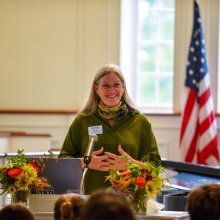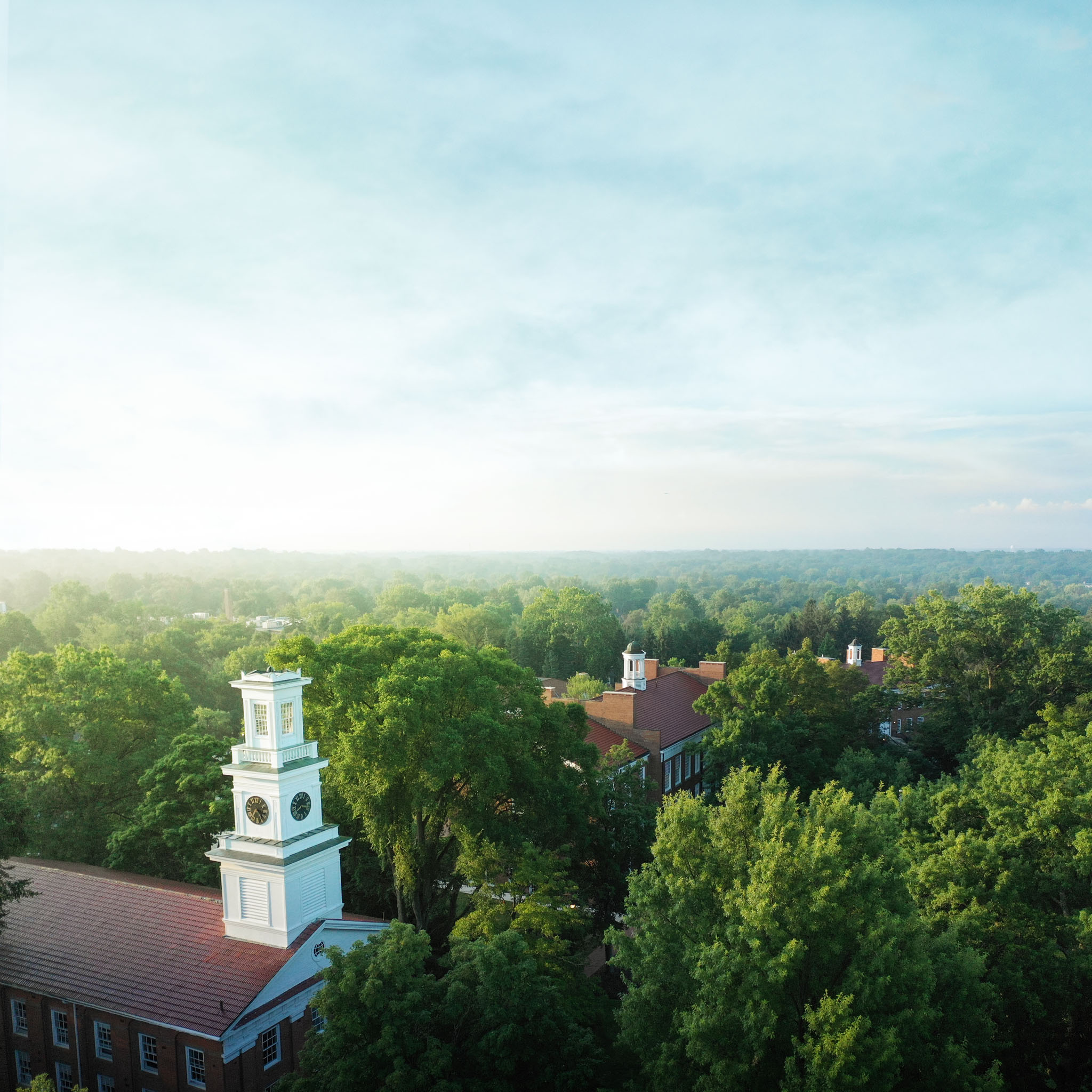
On a crisp Autumn morning, Western Reserve Academy’s students and faculty convened in community to welcome back and hear from Dr. Wendy Green Halpern ’84, the 2022-23 recipient of the Edward W. Morley Science Medal.
For context, the Edward W. Morley Science Medal is given to an alumnus/na who has made significant contributions to the scientific world, whether through a series of achievements, a remarkable career or significant advancement in the field of basic or applied science, or to the application of science, technology or engineering to the improvement of the human condition. The recipients are nominated by WRA community members and reviewed by the Morley Medal Committee.
Among this list are those who not only push the boundaries of human knowledge, but who also help inspire the next generation of scientists, researchers, engineers, doctors and more. Dr. Green Halpern is undeniably one such luminary.
At the start of the assembly, Dean of Academic Affairs Wanda Boesch set the table for our community, providing a thorough background of our most impressive guest. Dr. Green Halpern is a graduate of Amherst University, The Ohio State University College of Veterinary Medicine (where she focused on veterinary pathology) and the University of New Mexico Health Sciences Center, where she earned her PhD in Biomedical Sciences. From there, she launched a career in biotechnology drug development; became a diplomate of the American College of Veterinary Pathologists; and has led a career of more than 20 years experience as a veterinary pathologist working in Biotechnology, during which time she has authored or coauthored 40 peer-reviewed publications and eight invited book chapters. She has given more than 30 talks at various scientific conferences and institutions, spanning general biotechnology, toxicologic pathology, cardiovascular safety pharmacology, and developmental and reproductive toxicity topics — with Western Reserve Academy now to add to this list.
And yet, this is still only an abbreviation of her storied and extraordinary contributions to her field and short overview of a journey that is vast, weaving and required multiple cross-country moves. As she stood before the current student body, she reflected on how she could never have imagined the road she would travel after graduating from Dear Old Reserve.
“Mine was not a straight path,” she shared. “I was not one to follow the herd. I had a plan, and it started when I was eight. I wanted to be a veterinarian. I knew exactly what I needed to do. I needed to go to elementary school, junior high school, senior high school, college, vet school, and then I would have a job. So, I was set. I knew exactly what I wanted to do, and what I'll tell you is that my career in science was much more like Candyland. That is, there were lots of interesting things along the way and choices I had to make — many things that kept me from a straight, easy path.”
Dr. Green Halpern shared many moments and anecdotes that underscored this truth; pursuing veterinary science and discovering a profound love for pathobiology — putting in the incredible hard work and discipline it takes to pursue this difficult program — taking a chance on a different school on the other side of the country that would provide more support and the specific science track she was most interested in pursuing. There were calculated risks, setbacks and rewards. She relishes all that they taught her and how they helped her reach each new destination.
We as a community are always fortunate to hear from our alumni members, who both bring us into worlds we’ve yet to explore and offer shared experiences that knit us back together. What will our students take away from Dr. Halpern Green’s visit? Many were visibly moved by her opening remarks, where she asked her audience to take a minute to feel gratitude for their parents, guardians or mentors who made it possible for them to sit in these historic pews. With sudden choked and tearful emotion, she shared that for her, this person was her father, who is currently in hospice. We hold her and him in our hearts, in our thoughts, and we share in her gratitude for her father, who brought such a wonderful person into our community.
Dr. Green Halpern inspired many thoughtful questions, ranging from the ethics of animal testing to excited curiosity about a quick remark she made in passing about her horse — What kind of horse? (2005 Oldenburg Paint) How long has she had her horse? (Since 2015) What’s her name? (Flirt) What’s she like? (Sassy)
She even inspired surprised laughter when she mentioned offhand that if anyone else is interested in pathology and wants to look up diseased animal tissue, then they should know about public online resources available to them, such as Noah’s Archive!
By the end of her talk, Dr. Green Halpern brought us into her life and her world with openness and unabashed enthusiasm. She delved into her passion and advocacy for pediatric cancer research and medical research related to our youngest humans and how this connects to her own research and work. She spoke to COVID-19 and a post 9-11 world, how these events changed her life, just as they affected us all. And she ended her talk by reminding us just how surprising her journey would have been to her 17-year-old self, sitting in those pews all of those years ago.
“Don’t expect your path to be linear,” she advised. “Don’t expect to have all of the answers. Look for the shiny objects on your path — there’s going to be a lot of them! Figure out what you’re most curious about, and leave room for this curiosity. And be sure to thank your mentors.”
May we extend our own thanks and gratitude to Dr. Green Halpern, an incredible mentor for all who look up to her and a fantastic example for our own students as they consider their own trek ahead and the many shiny objects that await them.












